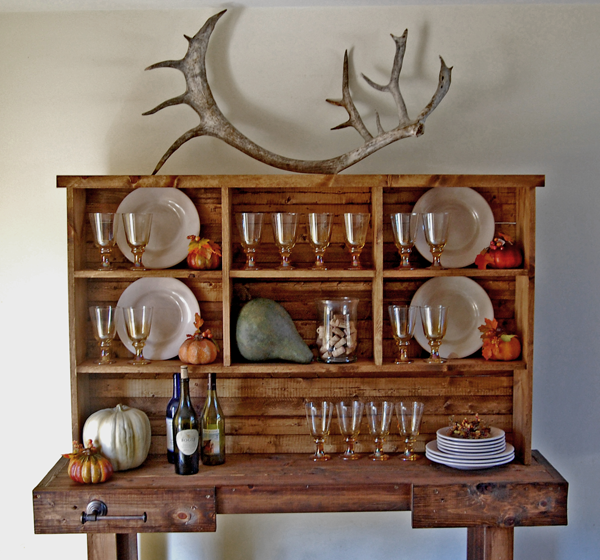
Hutch for the workbench bar/console. Six large cubbies and a large bottom shelf area. Simple crown.
Remember when Amanda totally outbuilt me with her stunning Antique Workbench Console?

I was so excited! But then some of our readers commented that they would love to have plans for the matching hutch.

But I had actually built the hutch for HGTV and was waiting for HGTV to post the plans. And in the meantime I got outbuilt OUTBUILT by one of our talented readers, Chris G.

And that's without a plan. But I'm so delighted to tell you that HGTV has posted the plans for the hutch, and you can find a very detailed, step by step plan written by me at HGTV right here. And you can also find plans for the Antique Workbench Console Bar right here.
But first, we've got to admire Chris G's amazing work.

Just wow.
The towel holder. Maybe I should buy one and then we can put our toilet paper holder back :) This looks so good!
Really loved the simple crown on this piece.
But one of my favorite parts was the feet.
But it's the finish that really makes a piece. And I'm so inspired and amazed by Chris G's finish.
Thanks Chris G for sharing your photos. If you would like plans for this hutch, HGTV has them published for free here. And the workbench console plans are located here.
Enjoy.







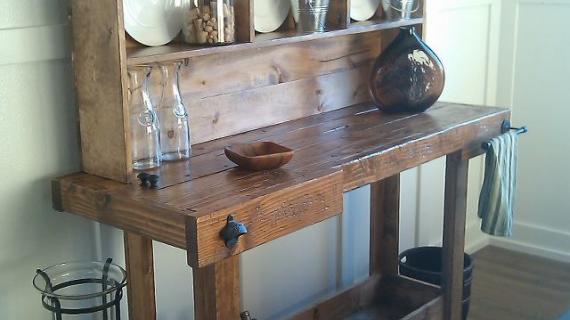
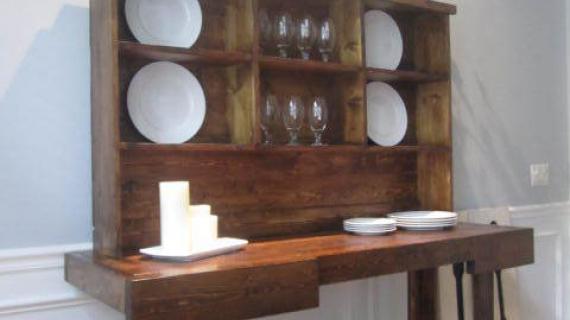
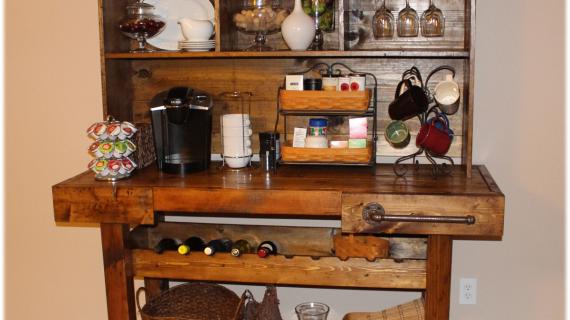
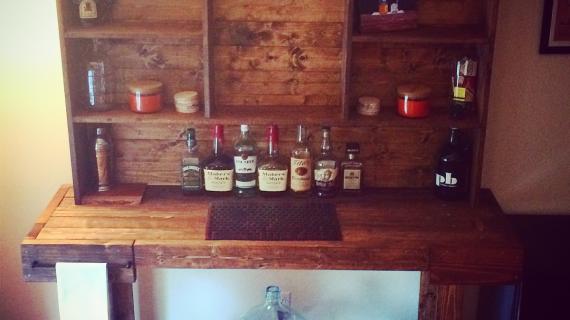
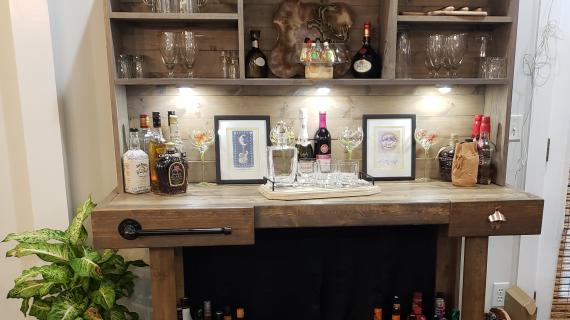

Comments
Whitney Smith (not verified)
Tue, 01/04/2011 - 02:58
What great photos! I am off
What great photos! I am off to view the plans. And I must say, I just love seeing you type the words HGTV... I don't have cable but I would have to get it if you got your own show :) Yes, I am that loyal!
sally (not verified)
Tue, 01/04/2011 - 07:24
That's gorgeous! Finish, and
That's gorgeous! Finish, and all!
Rebecca (not verified)
Tue, 01/04/2011 - 07:44
I'm with Whitney, I'd love it
I'm with Whitney, I'd love it if you had your own show! Thanks for the great photos!
Jessica (not verified)
Tue, 01/04/2011 - 08:01
I love this, Ana! I have a
I love this, Ana! I have a vintage chest of drawers in my dining room that I adore (lots of storage) but have always really wanted a hutch for display--unfortunately, it's the wrong size for everything they seem to sell. So, making my own is the perfect solution, and I think this will be the perfect balance of elegant and rustic for the space. Thank you for letting us know it's live on HGTV!
Theresa (not verified)
Tue, 01/04/2011 - 17:35
I LOVE it . Beautiful finish
I LOVE it . Beautiful finish Great job. Thank you for posting. Very inspiring.
Lori (not verified)
Mon, 01/10/2011 - 11:25
Absolutely beautiful!! I
Absolutely beautiful!! I would love to make this someday!
N.L.Walke (not verified)
Sat, 01/15/2011 - 05:19
Good morning everyone. We are
Good morning everyone. We are starting this bench today....will post pictures as soon as it looks like something instead of just a bunch of wood. I'm wondering if anyone has a read a comment (I'm not on facebook!) concerning where Chris found that towel bar he attached to his?! Many thanks!
Guest (not verified)
Sun, 06/05/2011 - 07:14
Towel Bar
Did you ever get an answer on where to find the towel bar??? I was able to find the exact bottle opener but can't seem to find anything even close to the towel bar...
1916home.net (not verified)
Sat, 01/15/2011 - 16:41
What do you recommend for a
What do you recommend for a finish on something like this? I really like the finishes on similar tables and furniture at PB and would be interested how to obtain a similar finish. If had some success with using a clean varathane from a spray can. Its thin so doesnt look slopped or brush on and I can control the coats easier than with a brush. Any recommendations I could use to get a similar PB style finish on furniture? GREAT website! I love all the ideas in here!
Lori (not verified)
Mon, 01/31/2011 - 08:56
Chris, it looks like your
Chris, it looks like your hutch is a little taller than Ana's. Would you mind giving the dimensions on it? Also, is the table the same dimensions as Ana's? Thanks!
chrisgaiser
Sun, 08/07/2011 - 17:35
Sorry for the lateness
I got the towel bar at lowes. Its satin nickel and I sprayed it with RustOleum oil rubbed bronze. Let me tell you stuff is great I have used it on several thing around the house and it looks great! The Height of hutch is 44" and the top shelves are adjustable. I used minwax dark walnut and minwax waterborne gloss poly.
Chris
www.cgwoodwork.com
Brandy (not verified)
Sun, 01/01/2012 - 10:21
Where do you get the workbench?
Just curious, I have scoured the pages to see if I am to in fact build the workbench or already have it. Any help is so appreciated!! Also, if I am to purchase it, what is the estimated cost? Thank you!
Brandy (not verified)
Sun, 01/01/2012 - 10:24
Disregard!
I knew once I posted the question, I would find the answer. Bench plans are separate. Found them :) Sorry about that!! Cannot wait to build this!